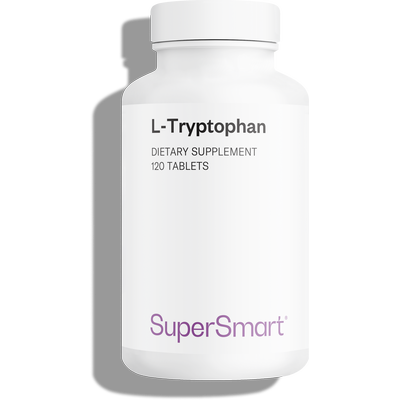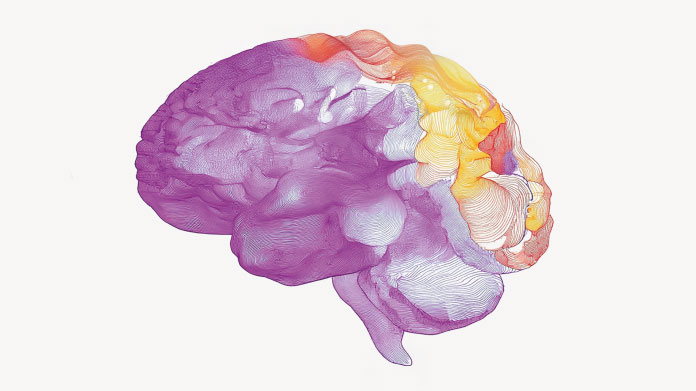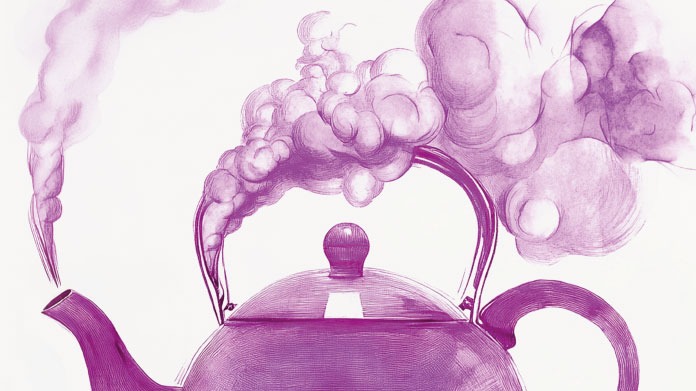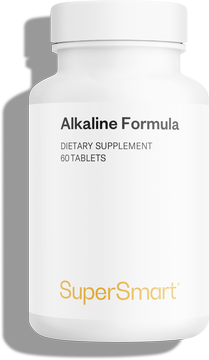When should you take tryptophan and where is it found in the diet?
There are many reasons why consumers choose to take tryptophan. Discover the benefits and dietary sources of this essential amino acid.
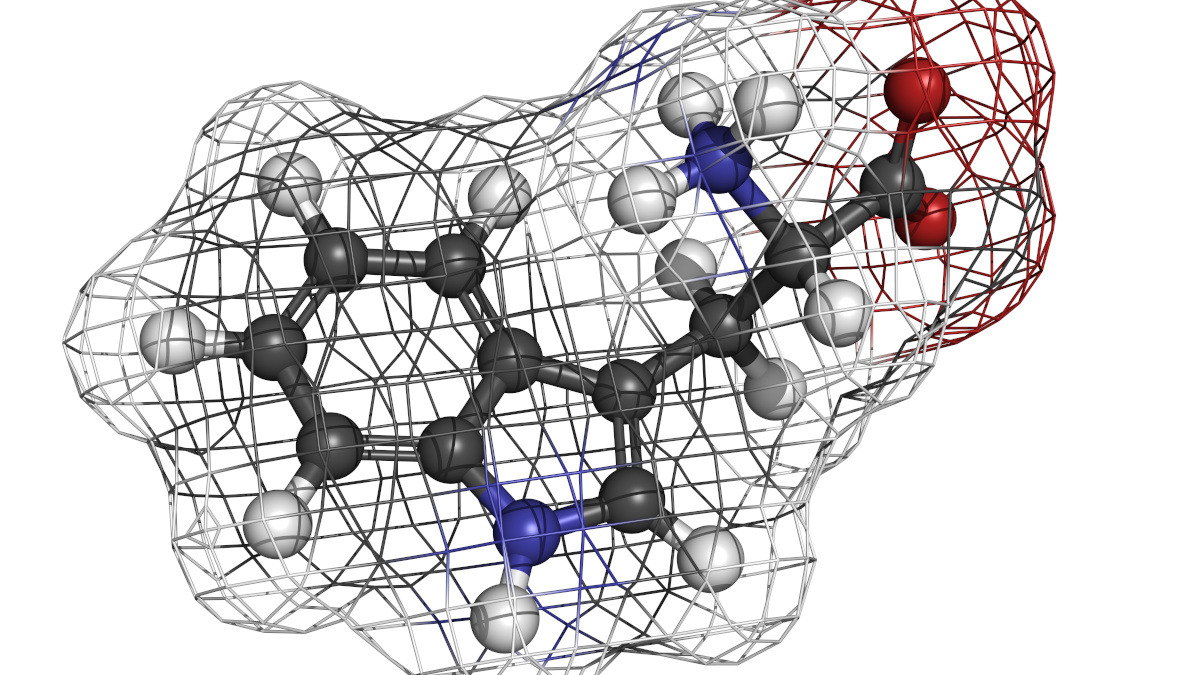
Tryptophan: an essential amino acid
Tryptophan is one of the 22 proteinogenic (protein-building) amino acids and also one of the 9 amino acids considered essential for health - those that cannot be made by the body and must be provided by the diet. Yet it represents just 1% of the amino acids present in proteins, and is thus the rarest amino acid in the body (1).
Tryptophan is nonetheless vital for numerous processes, including biosynthesis of serotonin and melatonin as well as endogenous production of L-kynurenine, a metabolite used to make niacin (vitamin B3) (2).
In actual fact, tryptophan is converted in the brain into 5-hydroxytryptophan (5-HTP), which is itself decarboxylated, particularly in the presence of vitamin B6, to produce serotonin, the neurotransmitter often referred to as a ‘feelgood hormone’ (3).
In summary then, tryptophan operates:
- in the muscles to produce proteins;
- in the brain to produce serotonin;
- in many types of tissue, including in the liver, to produce L-kynurenine, which is in turn used to produce niacin.
Health benefits of tryptophan
In and of itself, tryptophan offers no benefits, but as we’ve seen, it’s essential for many functions in the body (4) :
- tryptophan is a natural precursor of serotonin which is crucial for maintaining emotional equilibrium and calm, as well as promoting optimal relaxation, good quality sleep and an overall feeling of well-being;
- tryptophan is critical to the kynurenine pathway which is involved in physiological functions governing behaviour, sleep, thermoregulation, etc;
- tryptophan is a precursor of melatonin which helps reduce the time it takes to fall asleep.
Many people therefore choose to take tryptophan to regain emotional balance, especially over the winter months when the days are shorter and there are fewer hours of sunlight, and/or to help them get a good night’s sleep (5).
In addition, numerous studies have been conducted over the past 20 years to variously identify the part played by tryptophan in the immune system (via its role in the kynurenine pathway), evaluate its potential as an alternative to ‘traditional’ anti-depressants and assess its value in combatting heart disease (6-8).
Thus, as a result of its role in many of the body’s processes, tryptophan is an essential amino acid about which new, indirect benefits are still being discovered on a regular basis.
Best food sources of tryptophan
As mentioned, tryptophan is an essential amino acid: it cannot be produced by the body and must be provided by the diet. It’s therefore important to find good dietary sources in order maintain good health.
The foods with the highest content of tryptophan include (9):
- brown rice;
- dairy products;
- meat;
- peanuts;
- soya protein;
- eggs;
- fish;
- seaweed;
- pulses;
- chocolate;
- bananas;
- walnuts, hazelnuts, almonds, etc. ;
- brewer’s yeast.
However, in order for tryptophan to be used in the brain to produce serotonin, it must first cross the blood-brain barrier. In this, it has to compete with other amino acids such as leucine, isoleucine, valine, tyrosine and phenylalanine (10).
This is where things gets complicated. The concentration of tryptophan’s amino acid competitors depends on the proportion of carbohydrates and protein in the diet.
A diet high in sugar benefits tryptophan, whereas a protein-rich diet works better for the other amino acids, and thus has an adverse effect on tryptophan’s function as a serotonin precursor.
In other words, a healthy, low-sugar, high-protein diet makes it harder for the tryptophan in food to cross the blood-brain barrier. It’s precisely to compensate for this, and increase tryptophan concentrations, that many people opt for tryptophan supplementation.
Tryptophan supplements
Supplementing with tryptophan allows you to control your intake of this essential amino acid and increase its levels in the bloodstream, thus strengthening its position in the contest to cross the blood-brain barrier and thus fulfil its role of serotonin and niacin precursor.
So in order to ensure an adequate intake and obtain the benefits of this amino acid, more and more people are choosing to take a course of tryptophan supplements (such as L-Tryptophan, which provides a guaranteed 1000mg of tryptophan a day).
SUPERSMART ADVICE
References
- PETERS, J. C. Tryptophan nutrition and metabolism: an overview. Kynurenine and serotonin pathways, 1991, p. 345-358.
- GOLDSMITH, Grace A., MILLER, O. Neal, et UNGLAUB, Walter G. Efficiency of tryptophan as a niacin precursor in man. The Journal of Nutrition, 1961, vol. 73, no 2, p. 172-176.
- WALTHER, Diego J., PETER, Jens-Uwe, BASHAMMAKH, Saleh, et al.Synthesis of serotonin by a second tryptophan hydroxylase isoform. Science, 2003, vol. 299, no 5603, p. 76-76.
- FRIEDMAN, Mendel. Analysis, nutrition, and health benefits of tryptophan. International Journal of Tryptophan Research, 2018, vol. 11, p. 1178646918802282.
- RIEDEL, Wim J., KLAASSEN, Tineke, et SCHMITT, Jeroen AJ. Tryptophan, mood, and cognitive function. Brain, behavior, and immunity, 2002, vol. 16, no 5, p. 581-589.
- MOFFETT, John R. et NAMBOODIRI, MA ARYAN. Tryptophan and the immune response. Immunology and cell biology, 2003, vol. 81, no 4, p. 247-265.
- SHAW, Kelly A., TURNER, Jane, et DEL MAR, Chris. Tryptophan and 5‐Hydroxytryptophan for depression. Cochrane Database of Systematic Reviews, 2002, no 1.
- FLOC’H, Le, OTTEN, Winfried, MERLOT, Elodie, et al.Tryptophan metabolism, from nutrition to potential therapeutic applications. Amino acids, 2011, vol. 41, no 5, p. 1195-1205.
- HERDERICH, Markus et GUTSCHE, Birgit. Tryptophan‐derived bioactive compounds in food. Food Reviews International, 1997, vol. 13, no 1, p. 103-135.
- PARDRIDGE, W. M. The role of blood-brain barrier transport of tryptophan and other neutral amino acids in the regulation of substrate-limited pathways of brain amino acid metabolism. Transport mechanisms of tryptophan in blood cells, nerve cells, and at the blood-brain barrier, 1979, p. 43-54.
Keywords
1 Hours
The products I use are excel·lent
The products I use are excel·lent
ROSAS Josep Maria
8 Days
Delivery is prompt and I never saw a…
Delivery is prompt and I never saw a quality problem with the manufacturing. It is not possible to assess efficacy on a personal basis, since too many factors come into play. Efficacy can only be assessed statistically with a sufficient number of cases.
Roger De Backer
9 Days
I collaborates with the Supersmart…
I collaborates with the Supersmart more than 10 years. Every thing is going good. Quality of the things is good. Delivery comes in time. Five stars definitely !!!
Oleksiy
9 Days
All good
Simple, frictionless site, easy ordering, good delivery updates and execution.
Chris Robbins
11 Days
I feel better
I feel better
Peter Ammann
11 Days
Prompt delivery
Prompt delivery
JAKUB Radisch
12 Days
My new go-to for top quality supplements!
I am buying more and more of my supplements from this superb, high quality company. Cannot recommend it enough. Plus, excellent customer service with a quick, helpful team and speedy deliveries. Highly recommend Supersmart!
Cecilie H.
16 Days
SUPERSMART WHAT ELSE👍
SUPERSMART WHAT ELSE👍
DIEDERLE Christophe
19 Days
Excellent quality products with…
Excellent quality products with innovative formulas, as someone who has been suffering with acid reflux, these supplements have been lifesavers.
Oriana Moniz
19 Days
high quality supplement!
high quality supplement!
GALANT
20 Days
Good service prompt delivery
Good service prompt delivery
Mrs Marcella Reeves
24 Days
I like your clear explanation
I like your clear explanation. And how to make a choice of products for a specific health problem
Ingrid
31 Days
Great product and it arrives quickly.
Great product and it arrives quickly.
SOMMARIVA Gianni
32 Days
Excellent products and fast service.
Excellent products and fast service. What do we need more?
Margarida
36 Days
The variety of products is amazing
The variety of products is amazing, the offers are good and the sending is very fast. I just miss having a bit more of guidance about combinations, possible interactions, etc.
Maria Angeles Verdu

